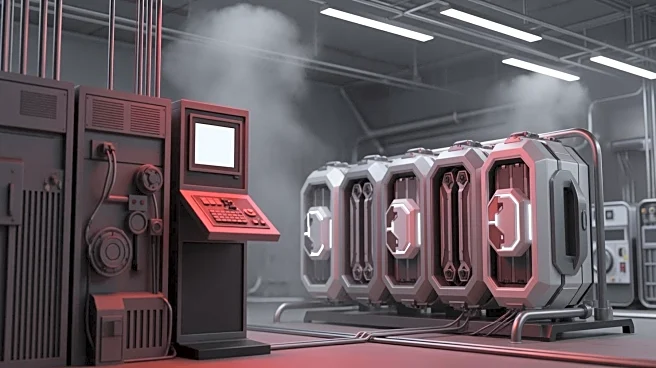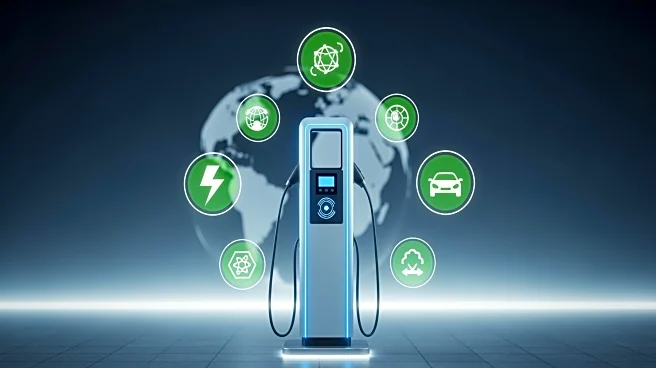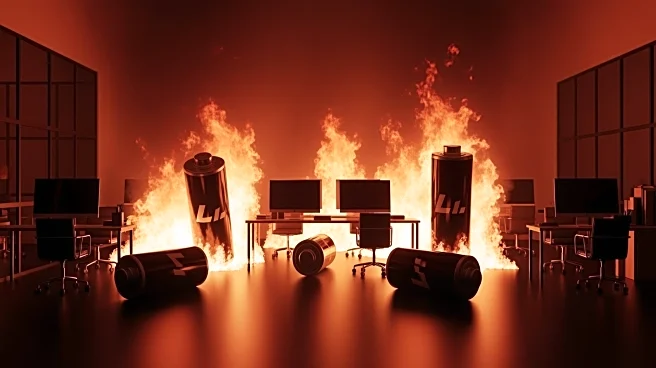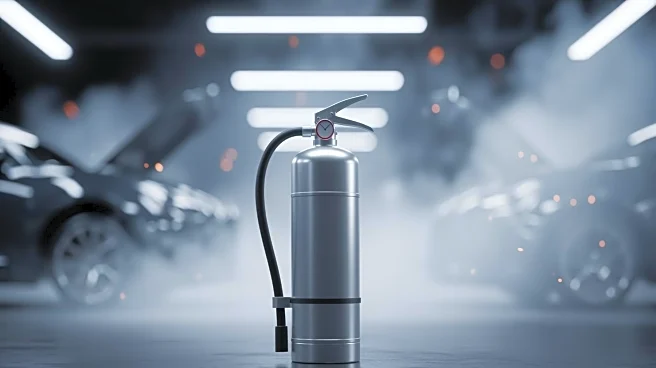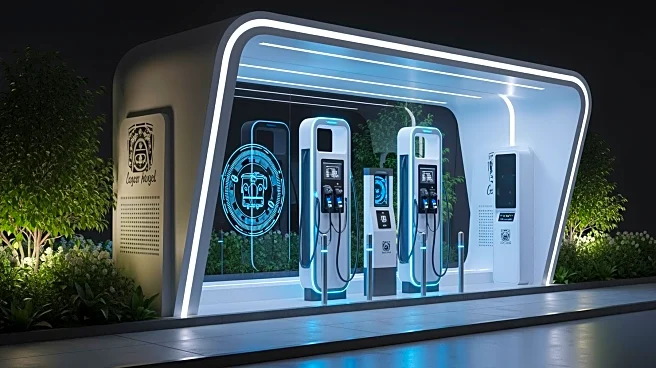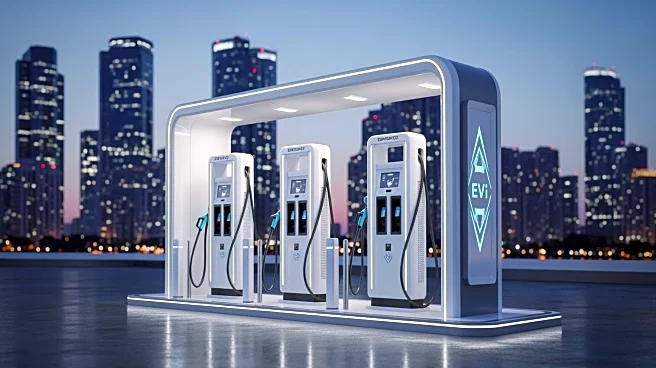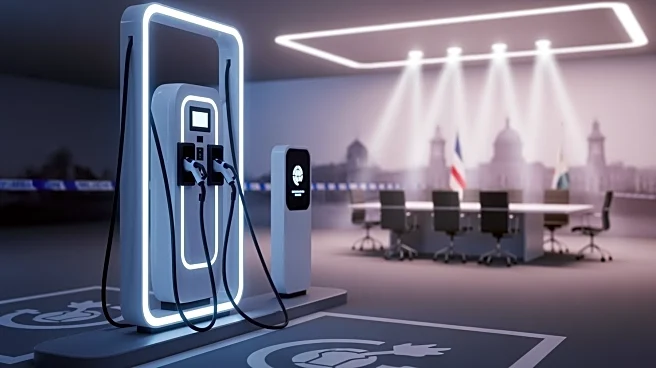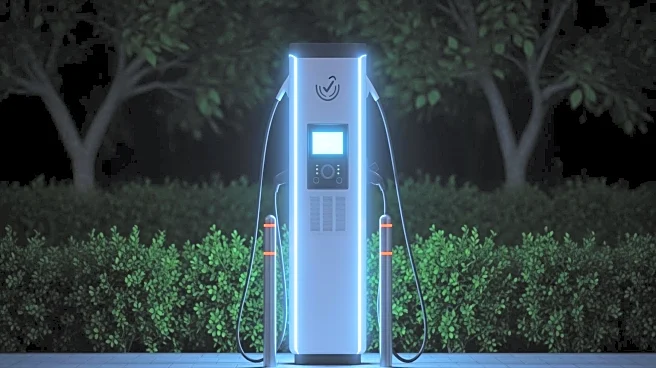What's Happening?
A significant fire broke out at General Motors' design studio in Pasadena, involving lithium-ion batteries and prototype cars. Over 100 firefighters and a hazardous materials team responded to the blaze, which was declared a four-alarm fire due to the scale
and hazardous materials involved. The fire presented unique challenges as water cannot be used to extinguish lithium-ion battery fires, which can cause chemical reactions leading to further fires or explosions. A firefighter was briefly trapped but was rescued without injuries. The cause of the fire is under investigation, and crews are working to ensure no one else is trapped inside the facility.
Why It's Important?
The incident highlights the risks associated with lithium-ion batteries, which are increasingly used in electric vehicles and other technologies. The fire underscores the need for specialized training and equipment to handle such situations, as traditional firefighting methods may not be effective. This event may prompt further scrutiny and regulatory considerations regarding the safety protocols for facilities handling large quantities of lithium-ion batteries. The impact on General Motors could be significant, affecting operations at their Advanced Design Center and potentially leading to increased safety measures and investments.
What's Next?
Fire crews will remain on site to manage the hazardous materials and ensure the area is safe. Investigations into the cause of the fire are ongoing, which may lead to changes in safety protocols at similar facilities. General Motors may need to assess the damage and consider adjustments to their design and manufacturing processes to prevent future incidents. The event could also influence industry-wide practices regarding the storage and handling of lithium-ion batteries.
Beyond the Headlines
The fire at General Motors' facility may raise broader questions about the environmental and safety implications of lithium-ion battery use. As the demand for electric vehicles grows, the industry may face increased pressure to develop safer and more sustainable battery technologies. This incident could accelerate research into alternative battery designs that minimize fire risks and environmental impact.
